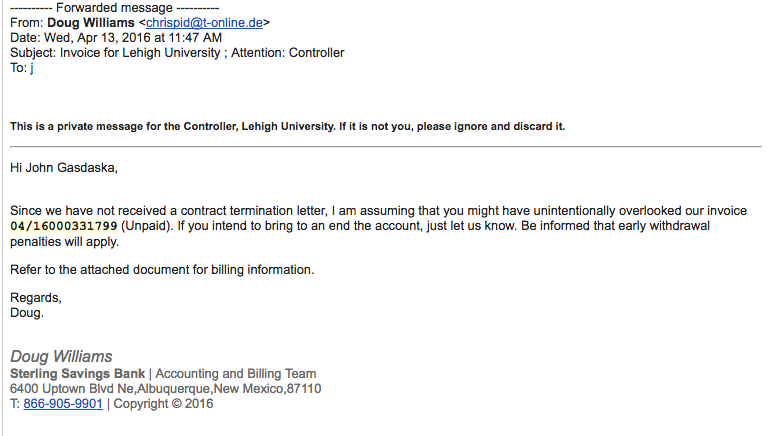Call for a Consultation!
440-349-3670
Hours: Monday - Thursday:
8:30AM to 5:00PM.
Friday: 8:30AM to 4:30PM.
Blog - Cyber Security
Category: Cyber Security
How to spot Spoofing and Email Phishing
Spotting Email Spoofing and Email Phishing is easy when you know what to look for. Read the definitions and examples below and protect yourself from these cybercriminals. Email Spoofing According to TechTarget.com: Email spoofing is the forgery of an email header so that the message appears to have originated from someone or somewhere other than the actual source. Email spoofing is a tactic used in phishing and spam campaigns because people are more likely to open an email when they think it has been sent by a legitimate source. The goal of email spoofing is to get recipients to open, and possibly even respond to, a solicitation. Although most spoofed email falls into the nuisance category and requires little action other than deletion, the more malicious varieties can cause serious problems and pose security risks. For example, a spoofed email may purport to be from a well-known shopping website, asking the recipient to provide sensitive data such as a password or credit card number. Or the spoofed email may ask the recipient to click on a link that installs malware on the recipient's computing device. Email Phishing Phishing is a type of online scam where criminals send an email that appears to be from a legitimate company and ask you to provide sensitive information. This is usually done by including a link that will appear to take you to the company’s website to fill in your information – but the website is a clever fake and the information y

 View Cart []
View Cart []
